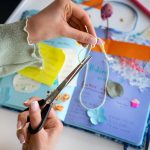Articles6 months ago
Collaboration Between Makers and Communities: How Digital Communication Changes the Game
In recent years, the way makers—think DIY enthusiasts, hobbyists, and small-scale creators—connect with their communities has undergone a major shift, thanks to the rise of digital communication. Gone are the days when sharing ideas, collaborating on projects, or even seeking feedback meant physical meetups or mailing lists. Today, online platforms and digital tools have transformed these interactions into dynamic, instant, and more inclusive exchanges. One of the biggest game changers is social media. Platforms like Instagram, TikTok, and Facebook enable makers to showcase their projects to a global audience in real time. This instant access not only helps build a community around shared passions but also opens doors for feedback and collaboration that wouldn't be possible offline. For example, a woodworker in a small town can share their latest piece with thousands of interested viewers worldwide, gaining insights and tips from fellow makers, or even collaborating on ideas for future projects. Online forums and dedicated maker communities – such as Instructables, Reddit's r/DIY, or Maker Forums – foster another layer of collaboration. These spaces allow makers to ask questions, troubleshoot issues, and exchange ideas without geographical barriers. The beauty here is the diversity of perspectives participants bring; a beginner in one country might get advice from an experienced maker halfway across the globe. This democratization of knowledge helps accelerate learning curves and sparks innovation. Digital communication tools like video conferencing apps also enhance collaboration, especially for group projects and workshops. Virtual maker meetups or live-streamed tutorials create interactive environments where participants can get real-time feedback and support. During the COVID-19 pandemic, this shift to online engagement proved essential for keeping maker communities active and connected even when in-person events were impossible. Moreover, open-source philosophies thrive online. Makers often share their designs, code, or instructions freely, inviting others to modify or improve upon them. Websites like GitHub or Thingiverse exemplify this approach, enabling collective problem-solving and iterative development of projects. This collaborative spirit is further reinforced by crowdfunding platforms like Kickstarter, where makers can rally supporters and resources before even starting production. Digital communication also helps niche communities flourish. Whether it’s 3D printing, sustainable crafts, or robotics, online groups provide spaces where enthusiasts can find mentors, share resources, and celebrate successes. This sense of belonging and shared purpose empowers individuals who might otherwise feel isolated or unsupported locally. Of course, digital communication isn’t just about sharing; it’s also about learning and teaching. Makers are increasingly using platforms like YouTube or Twitch to teach skills, share processes, and inspire others. This peer-to-peer learning accelerates skill development and nurtures new generations of creators who might not have access to formal education programs. In short, digital communication has fundamentally changed how makers and communities interact. It breaks down geographical, financial, and social barriers, creating a global fabric of collaboration and innovation. This interconnectedness doesn’t just make projects more exciting; it fosters a culture of open sharing, learning, and collective growth—making the maker movement more vibrant than ever before.
Daily Articles
Articles6 months ago
Craft and Ecology: Shifting from Mass Production to Local Manufacturing
In recent years, there's been a noticeable shift in the way we think about how things are made. Gone are the days when mass production ruled the market, churning out endless versions of the same product in vast factories, often at the expense of the environment. Today, more people are paying attention to the stories behind their goods—where they come from, how they're made, and what impact they leave on our planet. This movement is rooted in the idea of combining craft traditions with ecological awareness, moving away from the big, impersonal factories toward more localized, sustainable manufacturing practices. So, what exactly does "craft and ecology" mean? Simply put, it’s about merging the old-school approach of handcrafted, artisanal work with eco-friendly practices. Think of it as restoring the human touch and craftsmanship to products while making sure we’re not damaging the environment. This approach emphasizes quality over quantity, encouraging small-scale production, often done by artisans or local makers who care deeply about their craft and the ecological footprint involved. One of the main drivers behind this shift is the growing concern over the environmental impacts of mass production. Large factories often rely heavily on fossil fuels, produce significant waste, and sometimes use chemicals that aren’t exactly environmentally friendly. Plus, the bulk manufacturing model leads to excessive waste, overconsumption, and long-distance shipping that adds to carbon emissions. Moving toward local manufacturing not only reduces these factors but also supports local economies and preserves traditional craft techniques. Another exciting aspect of this movement is the rise of community-based workshops and small studios. Many artisans are embracing sustainable materials—like organic cotton, recycled metals, and locally sourced wood—and are creating products in smaller batches. This way, they minimize waste and overproduction, and can respond more directly to what their community actually needs. It’s about creating a more conscious consumption cycle, where buyers value uniqueness, durability, and the story behind each item. Technology also plays an interesting role here. Modern tools like 3D printing and CNC machines allow small-scale manufacturers to produce complex designs with less waste and more precision. These innovations help keep the craft alive while aligning with eco-friendly goals. Moreover, the power of social media and online marketplaces has made it easier than ever for local artisans to reach a global audience, sharing their craft and eco-conscious message far beyond their immediate community. This shift towards local and sustainable manufacturing has its challenges, too. It often requires more time, skill, and investment upfront compared to mass production. Prices can be higher, which might make it harder to compete on cheap, disposable goods. But for many consumers, the trade-off is worth it—buying something that’s made with care, from local materials, and with respect for the environment. In essence, moving from mass production to craft-based, local manufacturing represents a mindset change. It’s about valuing quality, tradition, and ecological responsibility over quantity and fleeting trends. As more people start to question where their stuff comes from and what it costs the planet, this movement could very well be the way forward toward a more sustainable, meaningful approach to manufacturing—and everyday life.
Articles6 months ago
How Emerging Technologies Are Reshaping Handcraft in 2025
Sure! Here's an excerpt for your article on how emerging technologies are transforming handcraft in 2025: --- **How Emerging Technologies Are Reshaping Handcraft in 2025** Hey there, craft enthusiasts! If you thought traditional handcraft was all about sweat, patience, and a dash of magic, think again. In 2025, the scene is buzzing with tech innovations that are giving age-old artisan skills a fresh, futuristic twist. It’s a wild fusion of the old and the new, making handcrafted goods more innovative, precise, and even more sustainable. First up, **3D printing** is making quite the splash. Known for rapid prototyping and industrial uses, 3D printers are now being used by artisans to produce intricate jewelry, pottery, and custom-made home decor. Artists can sketch a design on their tablet, convert it into a 3D model, and print it out in ceramic or metal. This not only speeds up the creative process but also allows for complex designs that would be nearly impossible by hand. Imagine a ceramic vase with delicate, complex patterns—tricky to craft manually but easily done with a 3D printer. Next, **AR and VR (Augmented and Virtual Reality)** are revolutionizing how artisans learn and showcase their work. Many craft schools now incorporate AR glasses, letting students see virtual step-by-step guides overlaid on their real work. Meanwhile, VR platforms offer virtual galleries, where artisans can display their creations to a global audience without leaving their workshop. This democratizes access, making it easier for small artisans to reach customers worldwide. Then, there's **AI-powered design tools** that act like a creative co-pilot. These tools analyze trends, suggest color palettes, or even generate custom patterns based on user preferences. For handcrafted textiles, for example, AI can assist in designing unique patterns that are culturally inspired yet contemporary. Some artisans also use AI to optimize material usage, reducing waste—an important step for eco-conscious craft. Sustainability is another big player in the game. Emerging tech like **biofabrication**—growing materials in labs from natural substances—means artisans can now craft jewelry or accessories using materials like lab-grown leather or bioplastics. This minimizes environmental impacts, aligning beautifully with the ethos of many handcrafted communities that value eco-awareness. Furthermore, **IoT (Internet of Things)** devices embedded in craft tools are helping artisans maintain their equipment better and streamline their workflow. Imagine a potter’s wheel linked to sensors that monitor its performance, alerting the artist when maintenance is needed, or even adjusting speed automatically for perfect results. All these innovations are shaping a new era for handcraft: one where tradition meets technology. While some purists might worry about losing the human touch, most see these tools as amplifiers—empowering artisans to push creative boundaries, increase efficiency, and reach wider audiences without sacrificing the soul of handcrafted work. The future of handcraft in 2025 isn’t about replacing artisans; it’s about giving them new superpowers. --- Let me know if you'd like me to continue or adjust the tone!














